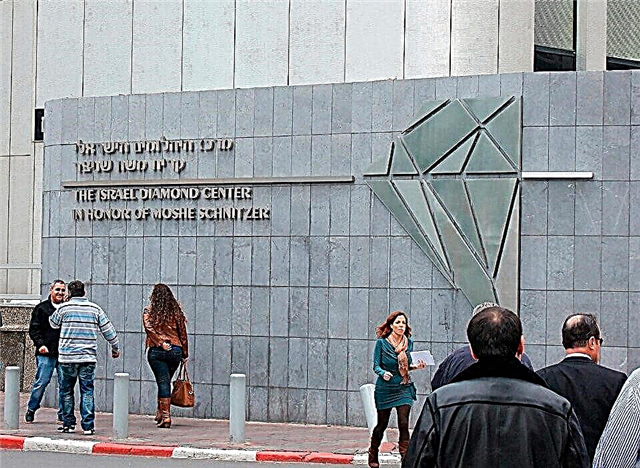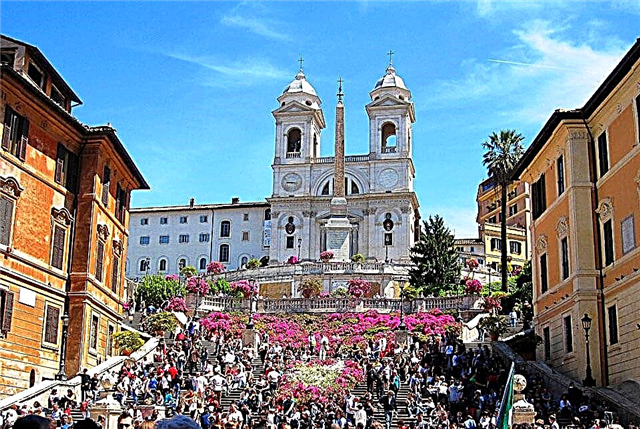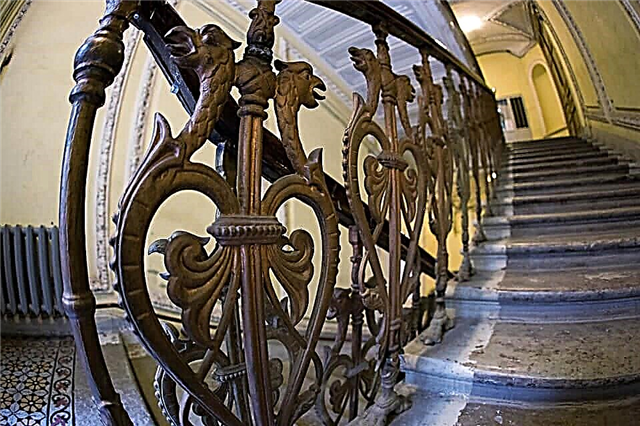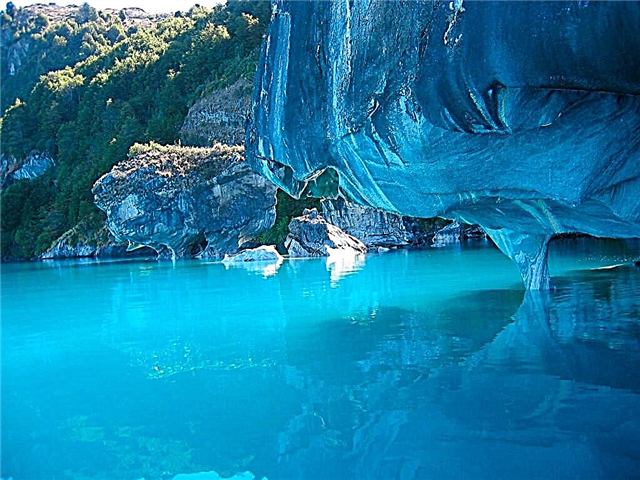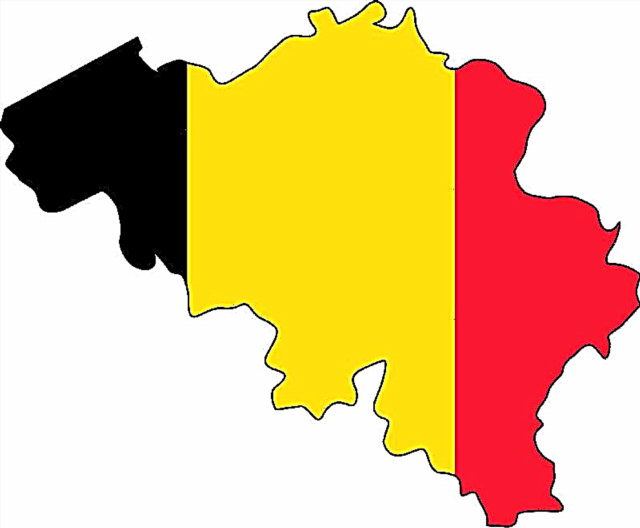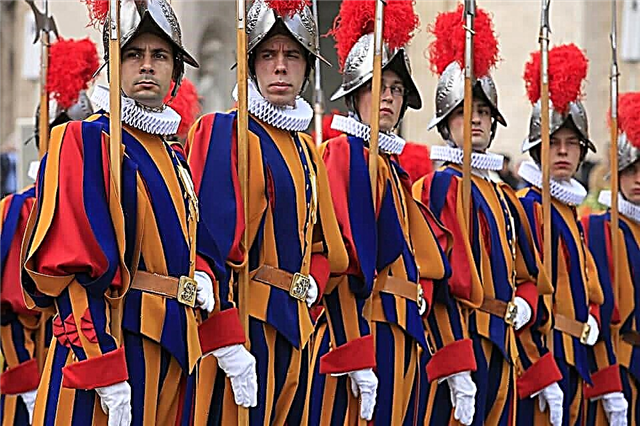The Papal State, covering 44 hectares in the center of the Italian capital, is one of the most visited places in the world. Catholics from all over the world come to see the Pope in person and listen to his sermon. Tourists also do not disregard the sights of the Vatican. On the territory of the mini-state, 23 museums are concentrated, which contain unique relics and masterpieces of world art. Access to the museums is open daily (9-18 hours), except for Sundays and holidays (1.01, 1.05, 25.12). Ticket prices range from 12 € (children, 6-18 years old) to 21 € (adults). It is more convenient to purchase subscriptions via the Internet in order to avoid long queues at the box office. Free admission every month on the last Sunday (from 9 am to 2 pm).
Apostolic library

Under Pope Sixtus IV (15th century), a repository for manuscripts, engravings, cartographic images, etc. was organized in the Vatican residence. The library was rapidly replenished with new copies. Pope Nicholas V made a significant contribution to the preservation of antique publications. He copied rare tomes with his own hand.
The modern library fund is considered one of the largest in the world. It contains 1.6 million books, 150 thousand manuscripts, 8.3 thousand incubules, 100 thousand engravings and geographical maps, 300 thousand medals and coins. The library complex, in addition to the book depository, includes a restoration workshop and a school where librarians are trained.
The interiors are divided according to specialization into Greek and Latin rooms, an archive, a storehouse with secret documents. Access to the materials is issued with a special permit. To get it, you need to go through a check. The interior of the library is decorated with works of art by renowned masters. The halls are open for visitors every day (except weekends) from 8.45 to 17.10 h.
St. Peter's Square

The platz near the basilica is named after the faithful companion of Jesus. It is always filled with tourists from all over the world to admire the treasures of the Papal State. Along the perimeter, the square is surrounded by 4-row Doric columns. In total, there are 284 of them. The pillars are decorated with sculptural images of saints and martyrs of the Roman Catholic Church (96 figures).
The project for the creation and decoration of the square belongs to the architect D. Bernini. The scale of the open space (340 m long and 240 m wide) is in harmony with the size of the church of St. Peter, to which a wide staircase rises. In the center of the site there is an obelisk from Egypt (35 m), topped with a golden ball.
Parts of the cross on which Christ was crucified are placed in the inner cavity of the sphere. The decoration of the parade ground is completed by paired fountains (17th century), created according to sketches by Bernini and Moderno. Via della Conciliazione runs from the square to the banks of the Tiber. In the warm season, on Wednesdays (at 10.30 am), the pontiff from the window of his residence blesses the people gathered in the square in front of the Apostolic Palace.
Saint Paul's Cathedral

The main religious building on the territory of the Papal State is the Basilica dedicated to the Apostle Peter. It is an iconic object for adherents of the Catholic religion. All significant events take place in the cathedral, according to the canons of the Western Christian rite.
The structure is striking in its dimensions: height (facade) - 48 m, width -118.6 m. In the middle of the room there can be 60 thousand people at the same time. The building is richly decorated inside and outside. The upper part above the central portico is decorated with figures of Jesus with 11 apostles and John the Baptist. At the entrance there is a mosaic panel "Navicella", created in the 13th century. based on drawings by Giotto.
The interior is a real gallery of works of art by the great masters Raphael, Michelangelo, Bernini, Bramante. The right foot of the sculpture of St. Peter is endowed with special grace. Every visitor seeks to touch it. Tourists can climb the stairs to the dome of the temple, which offers stunning views of the surroundings.
The cathedral is accessible for visits daily: 7 am - 6.30 pm (1.10 am - 31.03) and 7 am - 7 pm. (1.04 - 30.09). There is no admission fee. Price for climbing to the observation deck: on foot - 8 €, by elevator -10 €.
Sacred grottoes

The Vatican has landmarks not only on the surface, but also underground. Below is a real network of labyrinths, consisting of man-made caves (grottoes) and artificial tunnels. The dungeons located directly under the main Vatican basilica are called the Upper Grottoes. They are available for visiting by sightseers.
The key object of the sacred catacombs is the sarcophagus with the remains of the Apostle Peter, the closest companion and disciple of Jesus Christ. The authenticity of the burial was documented. Archaeologists have found an inscription in the grave certifying that the relics belonged to St. Peter. The tomb is protected from acts of vandalism by bulletproof glass.
Many pontiffs found their last refuge in the underground necropolis. Among them are Boniface VIII, Sixtus IV, Pius XI and others. A separate group of burials is represented by the tombstones of royalty. It is considered a great honor to be buried in the grottoes. Available daily (except Sunday): 9 am - 6 pm (Mon-Fri) and 9 am - 5 pm (Sat). You do not need to pay money to visit the grottoes.
Vatican Museums and Sistine Chapel: Fast Track Entry - 28 €
Skip-the-line: Museums, Sistine Chapel, St. Peter's Basilica - 43.90 €
Time entrance to St. Peter's Basilica with audio guide - € 19.50
Roma Pass: tourist card for 48 or 72 hours - from 29 €
Borghese Gallery: reserved admission ticket - 26 €
Hop-on hop-off sightseeing bus tour - 14 €
Colosseum, Roman Forum, Palatine Hill - 20 €
Bernini's canopy

In Peter's Cathedral, tourists can see an unusual religious building - a canopy covering the burial place of the famous apostle from above. This remarkable creation was made of bronze according to the sketches of architects L. Bernini and Borromini. The pommel was cast and installed in the temple at the direction of Pope Urban VIII (1624-1633).
The canopy was inspired by a 12-column pergola dating back to the early Christian period. It resembled a canopy of fabric worn on poles over the head of the Pope. The canopy symbolized the power of the head of the Vatican and at the same time performed a protective function.
Bernini's creation amazes with the elegance of forms and decorativeness. The columns are cast in bronze. Their surface is decorated with laurel branches. Sinuous forms create the illusion of growth, striving upward. The effect enhances the combination of black and gold tones. The upper part is decorated with figures of angels holding the ball (the symbol of the Earth) and the cross (the emblem of Christianity). Top height 29m.
Apostolic palace

The architectural ensemble, officially bearing the name of Pope Sixtus V, is known to the general public as the Apostolic Palace. It is a collection of buildings, passages, stairs, courtyards. The building houses the residence of the Pope and his secretariat.
The construction of the palace began in the 6th century AD. Over the centuries, the complex has expanded and now includes: 12 thousand halls and rooms, over 200 stairs, 20 courtyards. Most of the premises are accessible for inspection. Tourists are interested in the apartments where ceremonies with the participation of the Pope take place: the Great and Small Throne Rooms, the Clementine Hall, the Hall of Consistories.
Each room resembles a real museum. It will take more than one day to walk through the entire palace and admire its treasures. You can get inside through the main entrance, which is accessed by a staircase called Scala Regja. For tourists, the papal residence is open on weekdays and Saturdays (9-18 hours). A general ticket to all museums is presented at the entrance. No payment will be charged on the last Sunday of the month.
Gallery of geographic maps

A lot of interesting historical and geographical information is contained in the frescoes in the western wing of the Belvedere Palace. They depict maps of various areas under the Pope in the 16th century. In addition to the maps of the area, the paintings depict famous architectural structures, representatives of different nationalities, memorable events in history, heroes of myths. On the ceiling there are illustrations of the Holy Scriptures, portraits of biblical characters.
The idea of creating an unusual gallery belongs to Pope Gregory XIII. The architect Ottaviano Mascherino and the cartographer Ignazio Danti were involved in bringing the idea to life. 40 map projections were created. They are grouped in 17 rooms. The gallery is 120 m long and 6 m wide.
Gallery Arazzi

In the Middle Ages, in noble houses, lint-free carpets were used to decorate the walls. They were woven in the city of Arras and called "arazzi". Later, a similar technology was used to make tapestries. The Vatican Palace contains the best examples of weaving art of the 16-17th centuries. Initially, they were used to decorate the Sistine Chapel, and in the 30s of the 19th century. a separate gallery was set aside for tapestries.
On its walls there are 27 canvases created according to the sketches of Raphael's students. The episodes described in the Bible, as well as the history of the birth of Christianity, became the subjects for the tapestries. The tapestry corridor is open to tourists. In order to save arazzi, the room does not include bright light and photography with a flash is prohibited.
The Sistine Chapel

The most famous room is the chapel in the chapel of Pope Sixtus IV. The small hall owes its fame to the painting, in the form of frescoes. They depict biblical scenes. Only 12 paintings have survived to this day. Among them are "The Baptism of Christ", "The Calling of the First Apostles", "The Giving of the Commandments", etc.
Outstanding Renaissance masters worked on the frescoes: Botticelli, Perugino, Ghirlandaio, Cosimo Rosselli. The vault was painted by Michelangelo for 4 years. In the process of creating paintings, he invented a new artistic direction - sculptural painting. It is to the masterpiece of Michelangelo's brush that the chapel owes its fame.
In order to preserve the priceless cultural heritage, it is not allowed to talk and turn on bright lighting indoors. On important days, liturgies are held inside. The hall is divided by a grating into two parts: for parishioners and clergy. Open daily (except Sundays) from 9 am to 6 pm Entrance fee 15 €.
Raphael's Stanzas

At the invitation of Pope Julius II, the famous Italian master Rafael Santi designed 3 rooms in the Vatican Palace. Another room after the death of the artist was painted by his students. Each of the apartments (stanz) had its own purpose. Depending on this, subjects were selected for the frescoes.
The pontiff's study (della Senyatura) is illustrated with portraits of ancient Greek philosophers and poets. The paintings in the hall d'Eliodoro are dedicated to the patronage of God over man. The main plot in Inchendio di Borgo's stanza shows the story of the life of Pope Leo IV, who stopped the fire with the sign of the cross. The Konstantinovsky Hall was designed by his students based on the sketches of the great master.
The stanzas are slightly smaller than the ceremonial chambers: they are 9 meters long and 6 meters wide. Art critics consider the frescoes "School of Athens", "Dispute", "Parnassus" to be the best works of Raphael.
Borgia Apartments

Italian artist Bernardino Pinturicchio worked on the decoration of the private chambers of Pope Alexander VI (in the world of Rodrigo de Borgia). Each room has its own original name and plots corresponding to it. The hall of the Sacraments of Faith depicts the main events in the history of the Christian religion - the Annunciation, Christmas, Descent of the Holy Spirit, Resurrection and Ascension. Episodes from the lives of the glorified saints are reproduced in the room bearing their name. Portraits of famous diviners and prophets adorn the Sibyl Hall.
The Hall of Pontiffs is a kind of pictorial chronicle, where images of the holy fathers of the Roman Catholic Church in different eras are captured. An amazing story is connected with the Hall of Miracles of Faith. In it, after the collapse of the ceiling, only Pope Alexander VI remained unharmed.
Niccolina Chapel

In the 15th century, the old tower, bearing the name of Pope Innocent III, was partially refurbished. Its upper floors have been converted into a small chapel (6.6 m long and 4 m wide). The famous monk-painter Fra Beato Angelico was invited to decorate the interior. He decorated the walls of the chapel with paintings illustrating episodes from the life of Saints Lawrence (lower tier) and Stephen (upper tier).
Later, on the south side, the images were destroyed. Nicholas V turned the room into a personal prayer hall. Hence the name of the premises - the Niccolina Chapel. The chapel belongs to the most ancient part of the Apostolic Palace and is located in its northern wing.
Pinakothek

Real masterpieces of world fine art are collected within the walls of the papal Pinakothek. The gallery, consisting of 18 rooms, was equipped in 1908 by Pope Pius VI. The pontiff allocated a wing of the Belvedere Palace for storage. A separate building was erected by the architect L. Beltrami. The building is located on a plot near the north side of St. Peter's Basilica.
Large windows give access to the sun's rays and provide natural light to the canvases. For ease of viewing, the paintings are grouped in chronological order. Visitors have the opportunity to see the originals of de Vinci, Raphael, Perugino, Caravaggio and other European painters. In total, there are over 460 works in the funds. In addition, the museum has a collection of icon painting and mosaic panels.
Pio Clementino Museum

In the second half of the 18th century, the problem arose of preserving priceless antique sculptures in the residence of the Pope. At first, the figures were set up among the orange trees near the Belvedere Palace. As the collection expanded, open space became scarce. Pontiff Clement XIV ordered the construction of a special building. Architects Simonetti and Camposerri were involved in the design work.
They proposed to create rooms equipped with niches to accommodate the most valuable exhibits. The halls are dedicated to different themes: fauna, Greek and Roman art. In the recesses there are magnificent examples of classical sculpture: Lacoon and Sons, Perseus, Apollo, Hermes. Among the interesting artifacts is a huge monolithic bowl that belonged to Emperor Nero.
Bramante staircase

At the beginning of the 16th century. Pope Julius II ordered the architect D. Bramante to design a staircase that was supposed to serve as a transition from the Apostolic Palace to the Belvedere. The architect proposed an original solution. He used the well of St. Patrick from Orvieto as a prototype.
The staircase had a spiral design. The ascent was carried out along a gentle path, without steps. The structure is anchored in space with Doric columns. Lighting is provided through a glazed hatch above. The ladder was designed to move loads. The width of the passage allowed the use of carts. They could move towards each other. The old Brahmante staircase is currently out of service. Its inspection is available with special permission.
In 1932, an analogue of the medieval transition was created. Authorship belongs to D. Momo. He was inspired by the appearance of the DNA helix. A new staircase opens the way to the Pius-Clementine Museum.
Gregorian Etruscan Museum

Pope Gregory XVI became famous as an art lover and connoisseur. Under his patronage, in 1837, a museum of Etruscan culture was founded in the Vatican. It includes finds made in the lands of Etruria. The exposition is divided into 22 segments. Each room has its own focus. The pride of the collection is the bronze figure of the god of war Mars (4th century BC) and the marble face of the goddess of wisdom Athena (5th century BC).
Household utensils and attributes of the Etruscans made of bronze and precious metals are carefully preserved in the storage. Samples of antique dishes and burial items are on display. The museum covers not only the history of the Etruscan state, but also traces the development of the culture of other ancient civilizations of Southern Europe (Ancient Greece, Ancient Rome).
Gregorian Egyptian Museum

The fascination with ancient Egyptian artifacts began with the pontificate of Pius VII. The collection served as the basis for the formation of the museum. It was established in 1839 by the order of Pope Gregory XVI. The Vatican collection of North African relics is one of the most significant in the world. The halls display works of art and household items related to the cultural heritage of various civilizations of the ancient world.
During the excursion, tourists examine sarcophagi made of basalt and wood, mummies, burial urns, figurines of deities and pharaohs. Antique figurines and ceramics of European and Oriental masters are displayed in the showcases for all to see. Part of the exposition is dedicated to the rarities discovered during archaeological expeditions in Mesopotamia and the Middle East.
Chiaramonti Museum

The passage connecting the papal residence to the Belvedere was rebuilt at the direction of Pius VII at the beginning of the 19th century. The pontiff decided to place a collection of antique sculptures in it. The design of the gallery was entrusted to the architect A. Kanova. The museum exposition includes over 800 works of art. They are placed along the corridor, in arched openings. The store got its name from the surname of the founder, who comes from the Chiaramonti clan.
The museum is dedicated to two areas: mythological characters of Ancient Greece and historical figures of Ancient Rome. The world heritage treasury includes busts of Pallas Athena and Poseidon, sculptural images of Demosthenes and Cicero. The statues of the Nile with tributaries, the wounded Amazon, the spearman and others are rightfully considered classics of plastic art.
A separate room is reserved for mosaic panels (2nd century BC) and fragments of antique columns. The collection of inscriptions (over 3 thousand artifacts) from pagan times to the early Christian period is of interest to connoisseurs and lovers of history.
Vatican gardens

The hilly area in the west of the Papal State is occupied by a parkland known as the Vatican Gardens. The total area of green spaces is over 20 hectares. In the arboretum, trees of various species grow: pine trees, oaks, pines, cypresses, olives, etc. The fauna is represented by small mammals (mice, squirrels, rabbits), birds, amphibians and reptiles.
The natural landscape is complemented by architectural structures: the Governor's Palace, the House of Archpastors, the Leonin Wall, the Towers of the Winds and John, the Church of St. Stephen, Palazzo San Carlo. Snow-white statues are installed along the alleys. The fountains created at the beginning of the 17th century are of aesthetic and historical value. by masters from Holland.
In one of the corners of the park there is a heliport. A visit to the gardens is available exclusively as part of excursion groups and along a specific route. The ticket costs 65 € (adult) and 45 € (children). Opening hours similar to those of the Vatican Museums. In addition to walking, guests are offered a minibus ride through the gardens with an audio guide. The bus starts at 8.15, 9.15, 9.45, 10.15, 12.15, 12.45 h. The price for a subscription is 37 € for an adult, 23 € for a child (from 6 to 18 years old).
Cave di Lourdes

At the beginning of the last century, at the direction of the ruling pontiff, a copy of the famous Lourdes cave was built in the gardens. According to legend, the Virgin Mary appeared in a grotto near the French city of Lourdes (1858). Through the girl Bernadette Soubirous, the Mother of God conveyed a message to all Christians. Its text is engraved on the plinth of a statue in the Lourdes grotto.
Thousands of Catholic believers come to pray at the memorial every year. The Vatican counterpart replicates the look and landscape of the French prototype. The solemn consecration of the cave took place in March 1905. Divine services in honor of a significant event - the apparition of the Mother of God, are held in the grotto annually on May 31.
Villa Pia

The architectural gem of the gardens is the summer residence of the Roman pontiffs - the Villa of Pope Pius IV. Its project was developed by the Neapolitan architect P. Ligorio. In its original form, the building looked like a one-story building. Then the structure was expanded and supplemented. The building has a second floor, a loggia, a gallery, a corner tower with a chapel.
The overall plan of the ensemble resembles a closed quadrangle with a courtyard in the center of the perimeter. The house fit perfectly into the surrounding space and served as a wonderful place for relaxation and reflection. Nowadays, the villa has been turned into the headquarters of the Vatican Academy of Sciences. It serves as a meeting place for the luminaries of world science. The construction of the mid-16th century is one of the world-class attractions.
Church of Santo Stefano degli Abyssini

The Temple of Stephen of Abyssinian is one of the oldest religious buildings of the Papal State. The building was built in the 5th century and was part of the architectural ensemble that formed around St. Peter's Cathedral. The layout of the church completely repeated the projection of the main basilica. In a later period, the sanctuary underwent a transformation. In the 30s. 20th century the building has been overhauled.
The structure consists of elements dating from different centuries: portal-12th century, facade -18th century. The walls are plastered from the inside. Parts of the tombstones embedded for strength are visible in them. The fresco "The Virgin and Child" has artistic and historical value. Liturgies are held in the church in accordance with the traditions of the Ethiopian Catholic Church. Every year on December 26, a holiday is celebrated in honor of the patron saint of the temple - St. Stephen of Abyssinia.
Pinia's courtyard

Under the leadership of the architect Bramante at the beginning of the 17th century. in the papal residence, they arranged a gap between the main palace building and the Belvedere. As conceived by the author, a courtyard with flower beds was laid out and a building was erected. The niche in the building was occupied by a giant imitation of a pine cone. Hence the name - the yard of Pinia. The figure is cast from a gilded bronze alloy. On the pedestal are embossed scenes of ancient Roman competitions of athletes.
Peacocks made of bronze act as a kind of guardians of the pine nut. The front of the ball is decorated with a bas-relief of a human head, which spews out a fountain of water. The modern design of the square was complemented by the installation by Arnaldo Pomodoro, installed in 1990. It represents a symbolic image of the universe and the globe inside it. The shiny spherical surface reflects the surrounding space and people and thus demonstrates the human influence on the environment.
The landscape composition of the courtyard is completed by 4 symmetrical lawns with a grassy lawn. The courtyard is open for inspection during the opening hours of the museums. The ticket costs 17 € for adults and 8 € for children (6-18 years old). A guided tour is paid from 24 € for a child pass to 33 € for an adult.
Leonin wall

In the west of the Papal State, the remains of ancient fortifications (9th century) have been preserved. The wall was erected to protect the borders of the Vatican from the raids of Muslim troops. Pope Leo IV initiated the construction. The fence served as an impregnable barrier protecting the internal territory of the state. The defenses were strengthened by 13 towers. In honor of the ruling pontiff, the wall began to be called Leoninsky, and the city was named Leograda.
Today, a surviving fence separates the Vatican and the Borgo area in Rome. The gate of San Pellegrino, which closes the passage in the wall, serves as the starting point for guided walks in the domain of the Holy See. At the portal there is a post of the Swiss guard. The wall above the gate is decorated with a bas-relief with papal symbols.
Swiss Guard

Any solemn ceremony takes place with the obligatory participation of the Swiss guards.They represent the armed forces of the Papal State. The Infantry Cohort of the Pope's Swiss Sacred Guard is the oldest standing army in the world. The natives of the Confederation entered the service of the Holy See at the invitation of Pope Julius II in 1506.
Since then, the foot soldiers have always stood guard over the city-state. Their posts are located at the gates to the territory of the Vatican, in the residence of the pontiff. The strength of the armed forces of the Papal State is 110 people. Tourists are sure to take pictures of the guardsmen in bright colorful uniforms. It is sewn according to Michelangelo's sketches.
The costume consists of a yellow-blue-red camisole, cropped trousers and a beret with a scarlet plume. The guests are watching with interest the spectacular changing of the guard at the posts. It happens every hour during the day. Persons observing the established dress code are allowed on the territory: clothes with closed shoulders and knees for men and women. Tickets purchased for visiting are valid for one day.


